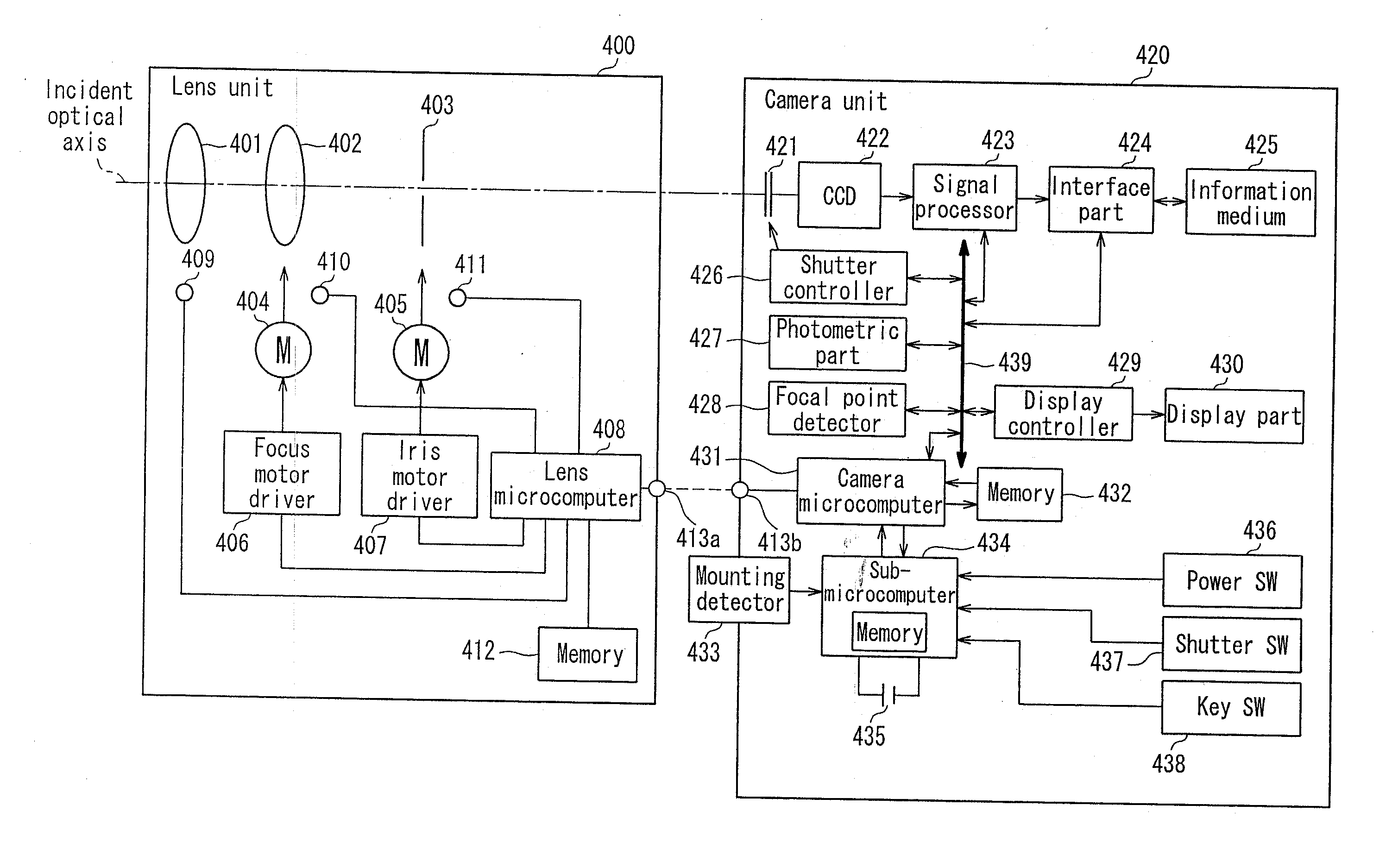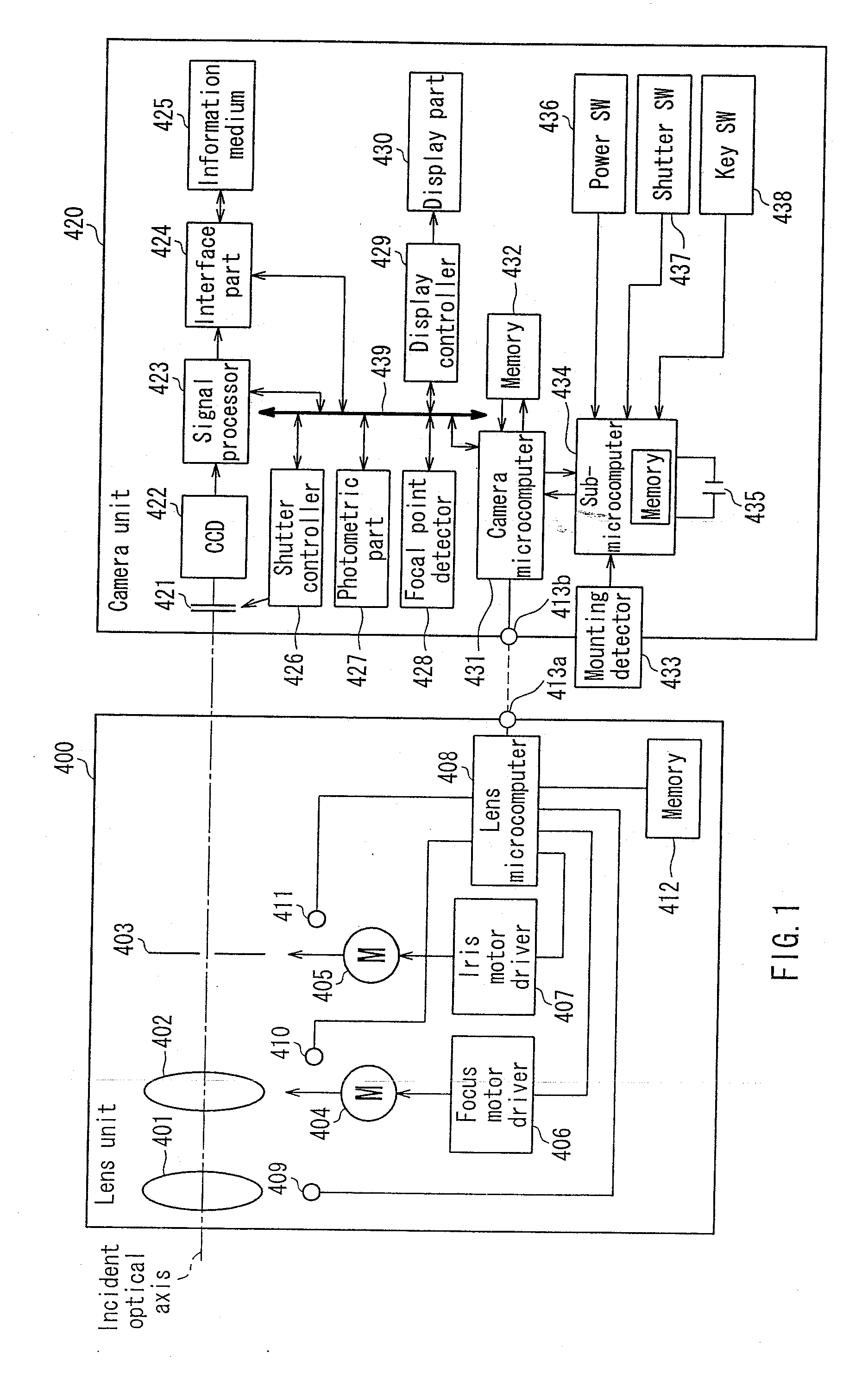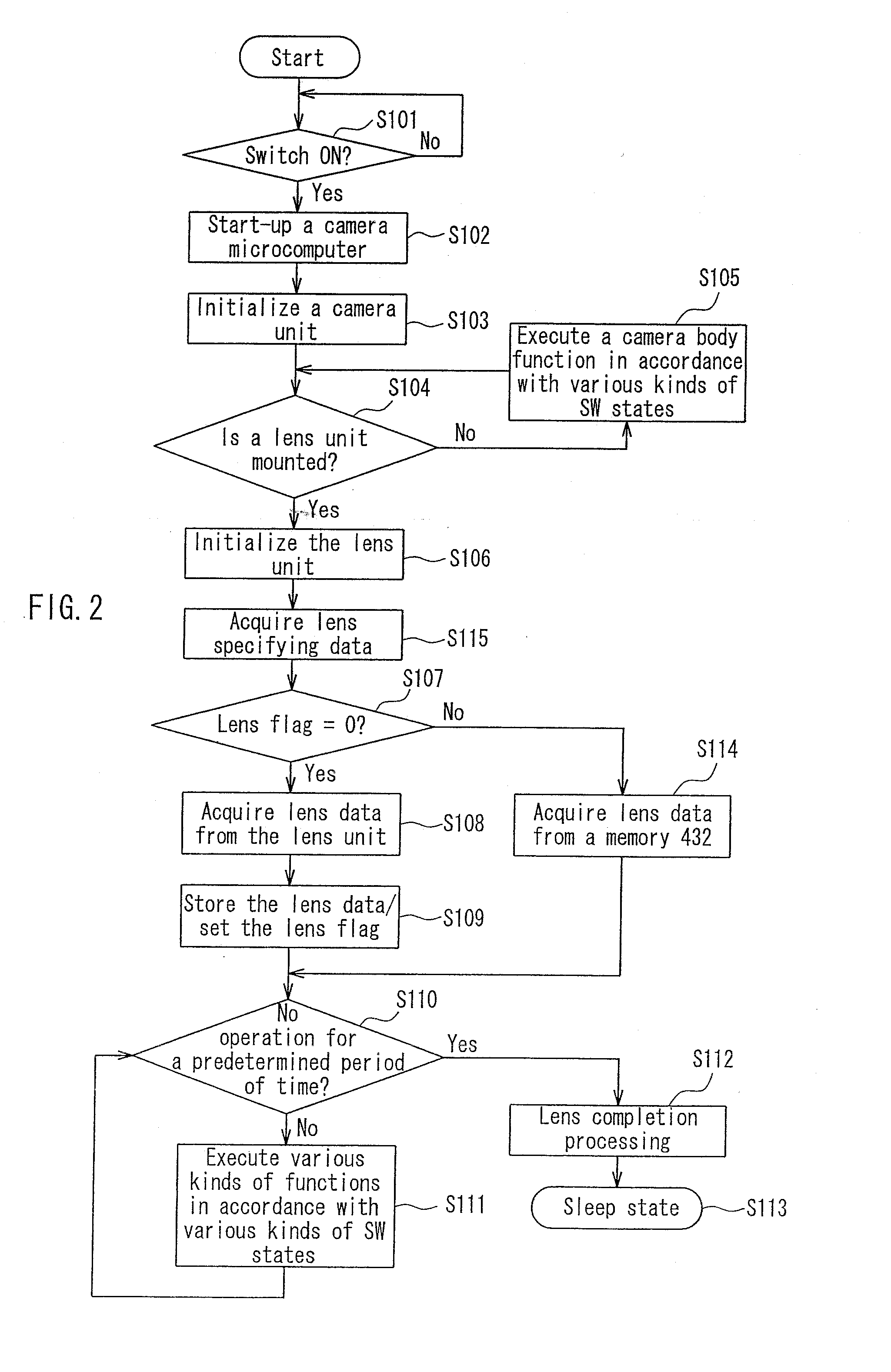Image pickup apparatus and image pickup system
a technology of image pickup and image, which is applied in the direction of camera focusing arrangement, printers, instruments, etc., can solve the problems of reducing ease of operation, unable to immediately shift from a photographable state to a photographable state, and taking a long time to obtain a photographable state, etc., to achieve enhanced ease of operation, shorten the shift time from a switch-on to a photographable state, and start quickly
- Summary
- Abstract
- Description
- Claims
- Application Information
AI Technical Summary
Benefits of technology
Problems solved by technology
Method used
Image
Examples
embodiment 1
[1. Configuration of a Camera System]
[0024]FIG. 1 is a block diagram showing a configuration of a camera system of an exchangeable lens system in the present embodiment. As shown in FIG. 1, the camera system of the present embodiment is composed of a lens unit 400 and a camera unit 420.
[0025] The lens unit 400 includes a zoom lens 401, a focus lens 402, an iris 403, a focus motor 404, an iris motor 405, a focus motor driver 406, an iris motor driver 407, a lens microcomputer 408, a zoom encoder 409, a focus encoder 410, an iris encoder 411, a memory 412, and a first communication terminal 413a.
[0026] The lens microcomputer 408 can control the driving of the focus motor 404 via the focus motor driver 406. This enables the focus motor 404 to operate the focus lens 402. Furthermore, the lens microcomputer 408 can control the driving of the iris motor 405 via the iris motor driver 407. This enables the iris motor 405 to operate the iris 403. Furthermore, the lens microcomputer 408 ari...
embodiment 2
[0110]FIG. 5 is a flowchart showing an operation of a camera 5 microcomputer of embodiment 2. In FIG. 5, the same steps as those in the flowchart in FIG. 2 are denoted with the same reference numerals as those therein, and the detailed description thereof will be omitted.
[0111] Furthermore, the camera microcomputer of Embodiment 2 is operated based on the block diagram shown in FIG. 1; however, the data stored in the memories 412 and 432 are different between Embodiments 1 and 2. In the memory 412 of Embodiment 2, unique information composed of identification information (hereinafter, referred to as a “lens ID”) set for each lens and setting information (hereinafter, referred to as “lens data”) containing a focus lens position, an iris amount, and the like is written. Furthermore, in the memory 432, a plurality of pieces of unique information, composed of a lens ID varying for each type and each product no. and lens data corresponding to the lens ID, are written. The identification...
embodiment 3
[0126]FIG. 6 is a flowchart showing an operation of a camera microcomputer of Embodiment 3. In FIG. 3, the same steps as those in the flowcharts in FIGS. 2 and 5 are denoted with the same reference numerals as those therein, and the detailed description thereof will be omitted.
[0127] The camera microcomputer of Embodiment 3 is operated based on the block diagram shown in FIG. 1; however, the configuration of the memory 432 is different between Embodiments 1 and 3. The memory 432 of the camera unit 420 includes a first region capable of storing lens data (hereinafter, referred to as “first lens data”) acquired from the lens unit 400, and a second region storing unique information composed of a lens ID and lens data (hereinafter, referred to as “second lens data”) previously written at a time of shipment from a factory. In Embodiment 3, although the first lens data and the unique information are stored in one memory 432, the following configuration also may be possible: a rewritable ...
PUM
 Login to View More
Login to View More Abstract
Description
Claims
Application Information
 Login to View More
Login to View More - R&D
- Intellectual Property
- Life Sciences
- Materials
- Tech Scout
- Unparalleled Data Quality
- Higher Quality Content
- 60% Fewer Hallucinations
Browse by: Latest US Patents, China's latest patents, Technical Efficacy Thesaurus, Application Domain, Technology Topic, Popular Technical Reports.
© 2025 PatSnap. All rights reserved.Legal|Privacy policy|Modern Slavery Act Transparency Statement|Sitemap|About US| Contact US: help@patsnap.com



